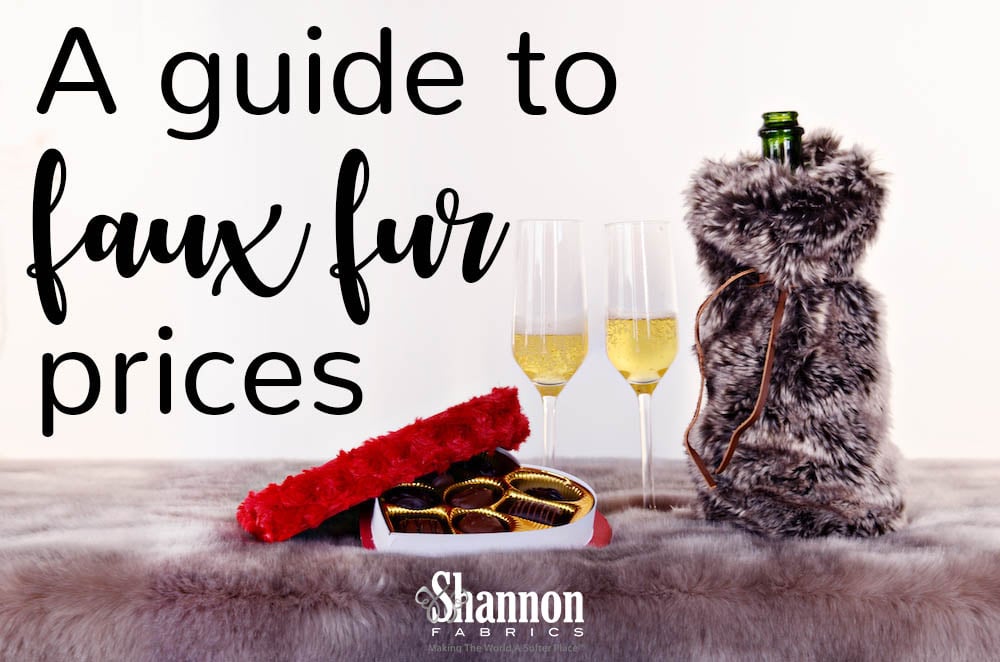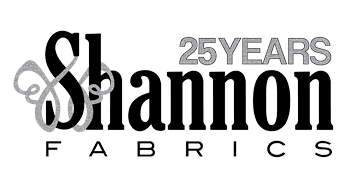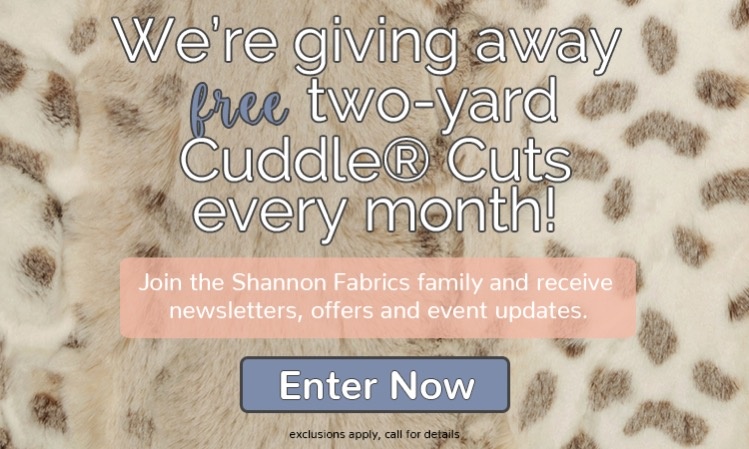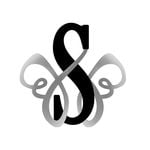
How much does faux fur cost? More specifically, how much does faux fur fabric cost? Since we’re a wholesaler of faux fur fabric, it makes sense that we get asked this question all the time.
While we certainly know our own prices (more on this below), we also know you have plenty of options at your fingertips when it comes to purchasing faux fur. Because of this, we have to answer the “how much does faux fur cost?” question with this not-so-straightforward answer: it depends.
Why?Just like shopping for a car, finding the right faux fur comes down to your personal needs. We all have our own budgets and uses in mind when shopping for fabric, so it really comes down to finding the best value.
READ MORE: What is Faux Fur? (Materials, Textures, & Projects)
This means the faux fur fabric you pick needs to have the right ratio of quality and durability at a price that fits your personal budget (and of course fits your project).
But how much should you expect to spend? What is the average price of faux fur?
To answer these questions, we’ve broken down a high-level overview of faux fur fabric price ranges for basic faux fur, and a more in-depth look at what affects how much faux fur costs.
How much does faux fur cost?
The most basic faux fur fabric is usually a simple solid and is generally available in a wide variety of colors and textures. This entry-level faux fur fabric can be priced from $15/yard to $25/yard at retail, depending on the brand.
Obviously, that’s a pretty wide price range and isn’t super helpful when budgeting for your next project, but this range means you have plenty of choices. Not all projects require top-shelf fabric and will do just fine with cheaper options, just as some projects command nicer fabrics to really stand out.
READ MORE: The 5 Best Faux Fur Wholesalers (Reviews/Ratings)
Let’s dive into the world of faux fur fabrics, and unpack why faux fur costs what it does and some important things to consider before purchasing.
What affects faux fur prices?
Naturally, the less-expensive faux fur fabric at the lower end of the price range listed above won’t be the same quality as the upper end of the range. Circling back to our idea of value, this lets sewists find the “bank for their buck” that’s right for them.
Here at Shannon Fabrics, we pride ourselves on being both transparent and ethical with not only how we approach doing business, but with how we manufacture our faux fur fabric. Our faux fur fabric is knitted and uses only high-quality yarn that maximizes durability and softness and makes our faux fur look oh-so-real.
We’ve gathered a wealth of experience and knowledge after selling faux fur fabric for over twenty years — here’s a more in-depth look at what factors impact price.
Faux fur fiber content and structure
Essentially, “fiber content” simply refers to what type of yarn the faux fur fabric is made of. Most faux fur is made with a blended yarn made of acrylic and polyester that is then knitted into fabric.
There are two main types of faux fur yarn — regular acrylic, which is the kind most commonly used in faux fur fabric, or mod acrylic, which is less common and features a shinier look.
Faux fur origin country
There are two main processes that go into making faux fur fabric: 1. Manufacturing the yarn, 2. Manufacturing the fabric (knitting the yarn, printing, etc.).
As expected, both where faux fur fabric yarn is made and where the fabric is knit impacts the overall price.
Faux fur yarn
There are only about 10 sources of faux fur fabric yarn around the world. The companies that make the yarn have massive plants with heavy-duty machinery — this barrier to entry limits the number of manufacturers, so there’s not much competition.
READ MORE: 8 Best Sewing Projects and Uses for Faux Fur Fabric
Kanecaron, made by Japanese manufacturer Kaneka, is the most-exclusive faux fur yarn on the market. Not only is it the highest quality, but it’s also highly exclusive. Because of this, they raise their prices every quarter, and over the last 16-or-so years, prices for their yarn has increased by almost 800 percent.
Faux fur yarn is also made in Europe and China, but as you’d expect from a cheaper yarn, the quality isn’t at the same level. Japanese yarn is finer and more supple, while European and Chinese yarn is more coarse and firm.
Faux fur manufacturing
Just like where the yarn is manufactured, where the yarn is knitted into fabric is a big factor in overall cost.
We manufacture our fabric in China with top-shelf Kanecaron yarn from Japan (mentioned above) in a mill that employs both European and Korean technicians who work and manage production. It’s a one-of-a-kind factory in China, with the best machines and technology available.
Other mills in China, Europe and the middle East may offer lower prices, but their mills aren’t as clean, well-kept or run as efficiently, and this often results in lower quality control and inconsistencies in the fabric. These mills likely also use yarn from other countries in production, not Japanese yarn.
Faux fur fabric weight and width
Most faux fur suppliers offer fabric that is 60 inches wide, and the average weight is about 1000 to 1,200 grams per yard. The weight and width of the fabric is a big factor in how much it costs — it takes significantly more yarn to knit a fabric that weighs 1600 grams per yard versus a fabric that’s only 600 grams per yard.
READ MORE: 7 Must-Try Faux Fur Sewing Tips
Since faux fur is a knit fabric, it also takes more time to knit a heavier-weight fabric and printing requires more dye, which ultimately increases the cost.
Contrary to popular belief, pile height doesn’t change the price that much since it’s based on weight. You can have a faux fur with a short pile height that weighs more due to how densely it’s knit.
Faux fur finishing processes
Faux fur fabrics come in a variety of colors and textures, which means multiple different finishing processes need to be applied during manufacturing and — you guessed it — each influences the price.
The least expensive version is a faux fur solid, and this only uses a tumbling process to finish with no other processes applied during manufacturing. Next is a fabric base that starts as a solid, but is printed on top before finishing.
Discharge printing is another finishing process that uses a solution to strip away the color of part of the yarn, before another color is added to give the fabric multiple colors.
Jacquard weave is the most expensive, and it allows you to make your own pattern with multiple colors of yarn (generally up to five colors). This type of finishing creates a pattern, design, or animal print, but it’s much slower – a manufacturer might be able to produce only 100 yards a day with five colors versus 600 to 700 yards a day for a solid.
Faux fur shipping (packaging)
Most customers likely aren’t aware of this, but how the fabric is shipped from the country where it is manufactured to the country where it will be sold significantly impacts price — especially how the faux fur fabrics are packaged before they’re put on the shipping container.
Most mills pack the fabric in rice bags, which decreases the cost of shipping. While the bags near the top of the container are likely fine, the fabric in the bags at the bottom get crushed and are often unsellable.
Shannon Fabrics packs all of our faux furs in boxes that suspend the fabric in a roll so that it doesn’t touch any of the four walls of the box. While this means it’s more expensive to ship (you can load a shipping container with 7,500 yards in rice bags versus only 5,000 yards in boxes), our customers know our fabrics will arrive in better shape and ready for the shelves.
Shannon Fabrics faux fur prices
It’s no surprise why faux fur fabric has become more and more popular in recent years. It’s deceptively versatile, durable and soft, and with plenty of colors and textures available, it can be sewn into a wide range of sewing projects or applications.
It has also been embraced by the fabric industry as an ethical, sustainable alternative to real fur (you can read about the differences, here).
Although we’re famous for our Cuddle® minky plush fabric, Shannon Fabrics has been selling faux fur fabric for over 20 years. We offer high-quality faux fur fabrics in a variety of weights, colors and prints, from our ever-popular solids, to our classic (and not-so-classic) animal prints.
READ MORE: How Much Does Faux Fur Cost? A Guide to Faux Fur Prices
Our faux fur fabric ranges from about $20/yard at retail for single-color solids, to upwards of $70/yard for our ultra-realistic Tissavel faux fur fabric. You can find all of our faux fur fabric here.
Price is always important to consider when budgeting and planning for your next sewing project, but that’s just one factor of many. We’ve created an entire library of educational materials to not only help guide you to picking the right fabric, but give you the tools and resources to maximize your enjoyment with faux fur. This includes free patterns, tutorials and videos that can be accessed anytime, anywhere — no matter if you end up buying faux fur fabric from us or not.
Use our store locator to find faux fur fabric for your next sewing project near you, or give one of our friendly customer service associates a call at 866-624-5252 to learn more about faux fur fabric or set up an account.

%20-%20Copy%20copy.png?width=143&height=69&name=Black%20logo%20(002)%20-%20Copy%20copy.png)









-Dec-11-2025-10-58-46-1415-PM.png?width=640&name=Untitled%20design%20(3)-Dec-11-2025-10-58-46-1415-PM.png)






.png?width=640&name=SEW%20TOGETHER%20livestream%20promo%20images%20(4).png)
.jpg?width=640&name=gencoreA%20(1).jpg)
-Oct-06-2025-07-25-25-9749-PM.png?width=640&name=SEW%20TOGETHER%20livestream%20promo%20images%20(1)-Oct-06-2025-07-25-25-9749-PM.png)

-4.png?width=640&name=SEW%20TOGETHER%20livestream%20promo%20images%20(3)-4.png)





.jpg?width=640&name=spring%20tea%20party_049%20(1).jpg)





.png?width=640&name=12%20Days%20of%20Cuddle%C2%AE%20(8).png)
.png?width=640&name=12%20Days%20of%20Cuddle%C2%AE%20(3).png)
-2.png?width=640&name=12%20Days%20of%20Cuddle%C2%AE%20(2)-2.png)

-2.png?width=640&name=12%20Days%20of%20Cuddle%C2%AE%20(4)-2.png)
.png?width=640&name=12%20Days%20of%20Cuddle%C2%AE%20(7).png)
.png?width=640&name=12%20Days%20of%20Cuddle%C2%AE%20(2).png)
.png?width=640&name=12%20Days%20of%20Cuddle%C2%AE%20(6).png)



















Leave a Comment